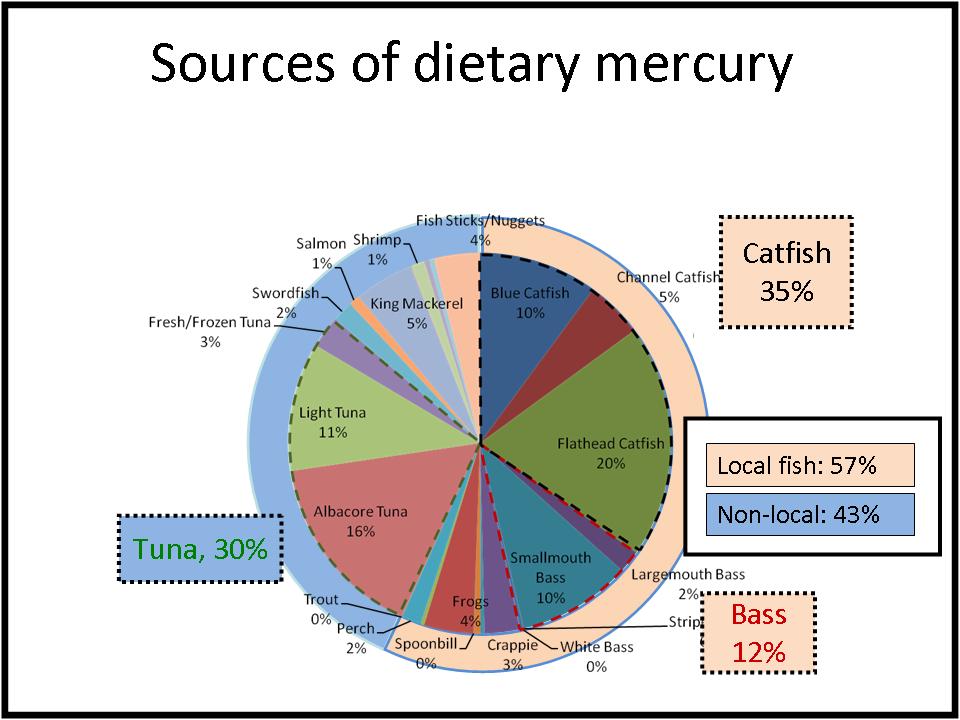|
|
What types of fish contributed most to mercury exposure?
Our results suggest that among people who regularly ate fish from the Grand Lake watershed, around half of the mercury in their diet came from local fish, mainly catfish and bass. Around 40% came from saltwater fish, primarily from store-bought tuna.
|

Click to enlarge
|

